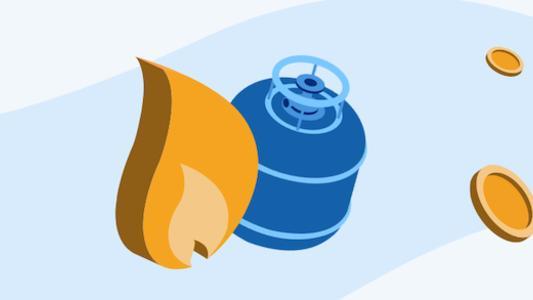Reduce Your Electric Bill - 10 Reasons Why Your Bill is High
The average cost of electricity is on the rise across Australia, which means reducing your energy bill is more important than ever. Below we detail why your bill might be higher than normal, and ways to reduce your bill by saving energy, using energy rebates, and more.
Why is My Electricity Bill So High?
There are tons of reasons your energy bill could be higher than normal, so it's important to check your bills to try and understand why.
By figuring out why your energy bill is higher than expected, you can address the issue and make changes to lower your bill for your next billing period.
Here's a list of 10 common reasons why your electric bill is so high:
- Estimated bills
- Expired energy tariff
- Seasonal changes
- Not unplugging vampire devices
- Using old appliances
- Using energy-draining appliances
- Extreme weather conditions
- Spending more time at home
- Additional people
- Renovations
Below we cover these in more detail:
1. Estimated Bills
If you don't have a smart meter at home, you should be submitting regular meter readings to your energy company. If your energy company hasn't received a meter reading in a while, they can use your usage history or a profile of a similar home to yours to estimate your energy bill. Sometimes this leads to over-inflated bills. Check your bills to see if the energy you use is the same amount each month or has an "E" for "estimate" next to your usage. Submitting a meter reading can show them your actual usage and your bill will be adjusted accordingly.
2. Expired energy tariff
Energy tariffs usually have a benefit period, which refers to how long the tariff agreement is good for. If your energy tariff's benefit period has expired, your energy provider will usually put you onto the default market offer which is usually the highest price on the market. Contact your provider or give us a call to see what new tariffs are available.
3. Seasonal changes
Changes in season can affect your energy bill due to the changes in temperature and amount of light during the day. In winter you may use more energy on heating and lighting as there as it gets darker earlier. Adjusting your thermostat and lowering the temperature on your water heater can help you save energy and reduce your electric bill.
4. Not unplugging vampire devices
Despite having your appliances turned off, they still draw current from electricity in the home. Check and see which devices you are not using and unplug them when not in use. These devices are called vampire devices because they slowly suck the energy from your home.
5. Using old appliances
Older appliances tend to be less energy efficient and can drain your home of energy. Check and see if your appliance has an energy star rating, and consider updating older appliances.
6. Using energy-draining appliances
Some appliances are simply overly draining. For example, ovens, clothes dryers, and space heaters are all known to be heavily energy-draining. Consider if you have been using these energy-draining appliances and what alternatives you might have.
7. Extreme weather conditions
Extreme weather conditions are something you might not originally think of when you discover your energy bill is higher than normal. However, summer heatwaves and winter cold fronts all affect your energy bills.
8. Spending more time at home
Spending more time at home is also another obvious reason your energy bill could be higher. For example, during the pandemic, many people saw their energy bills go up as a result of working from home.
9. Additional people
If you have had guests come to stay at your home, or have recently had more people than usual at your home, this will affect your energy bills. Empty bedrooms that are suddenly filled, chargers, hairdryers, showers and more loads of washing all will affect your energy bill.
10. Renovations
If you have had a recent renovation or update to your home, this could be a reason for an increase in your energy costs. Tools could have been plugged into your home's electricity supply for construction. Roofing or new rooms may lack proper insulation or new additions to the house could also mean your bill is higher than normal.
Need Energy Advice ?
Selectra's Energy Experts are Available To Help You Free of Charge
(Free Selectra Service - Currently open)
Saving Electricity in the Home
At the end of the day, saving electricity in the home is one of the best ways to reduce your electric bills.
Above, we mentioned vampire devices as one of the reasons your bill could be so high. To explain this in more detail, we have made a complete list of vampire appliances that tend to consume energy when not in use.
Small appliances: Leaving appliances like hairdryers, electric razors, or curling irons plugged in between uses can drain electricity from your house even if they are turned off. Make it a habit to unplug kitchen or bathroom appliances when you’re not using them and you'll be saving energy in your home and reducing your electricity bills all at once.
Appliances with a continuous display: Continuous displays on digital clocks on radios, microwaves, or stoves can drain more energy than you think. You probably don’t need those three or four LED clocks in your kitchen. If you can set the appliance display to turn off when not in use or add a kill switch to the appliance to turn it on and off between uses, you will save on your electric bills.
Charging devices: Leaving your laptop, phone, or tablet plugged in and charging, despite having 100% battery, is not only wasting energy in your home but could also be hurting the battery life and performance of your device. When your phone or laptop reaches 100% battery, unplug the whole charger from the wall outlet to prevent it from sapping energy it doesn’t need.
Computers & Home office: Home offices drain a lot of energy, even when you’re not using them. Leaving your computer plugged in and in sleep mode means that while your computer might not actively be using energy, it’s still draining some electricity from your house. Turn off and unplug your computer and printer to keep them from draining more energy overnight.
Home entertainment systems: Those home entertainment systems; surround sound, 4K Ultra HD TV, and multiple gaming systems; tend to stay plugged in all day, even when not being used. All these devices can sap energy from your home just by being plugged in and not in use. If you keep all these devices plugged into one power strip, you can easily unplug everything at once when not in use, or use power-saving devices to reduce your electric bills.
Energy vampires might only use a little bit of additional power individually, but when combined with multiple appliances in multiple rooms their use can add up quickly on your electricity bill.
Changes You Can Make to Save on Electricity
There are plenty of other small things you can start doing today to save more energy and reduce your electric bills. While individually, these energy-saving tips may not seem like much, they quickly add up to additional savings on your energy bill.
Switch to energy-efficient light bulbs: Energy-efficient light bulbs might be more expensive on the shelf, but they can be up to 75% more energy-efficient than traditional halogen or incandescent bulbs. Compact fluorescent light (CFL) bulbs, or LED bulbs, are some of the more energy-efficient options available when it comes to saving energy when lighting your house.
Did you know?Switching out an old halogen light bulb to a new LED bulb can save up to $35/year on energy costs.
Adjust the thermostat: Keeping your thermostat too high during the winter, and too low during the summer, can quickly add to your energy bill. During the summer, keep your thermostat at 25 or 26 degrees if possible, while in the winter keep your thermostat to 18 to 20 degrees. Each additional degree of heating or cooling can add 10% of your running costs to your bill, and that adds up quickly.
Switch your showerhead: Changing to a low-flow showerhead could help by saving energy and water. Showerheads are measured in liters per minute, and 3-star energy-efficient shower heads use less than 9 liters per minute while older showerheads could use over 20 liters per minute, not only wasting water but wasting energy through heating the water up. Thanks to designs in technology, low-flow doesn’t mean an unsatisfactory shower, and the feel of water pressure might actually be better with a new showerhead.
Change your laundry-washing habits: Switch to washing your laundry in cold water, for shorter wash cycles. Hot water usually isn’t necessary for day-to-day laundry, and it takes a lot of energy to heat up the water. In addition, switching it up and drying laundry on a clothesline lowers your energy usage while taking advantage of nature’s biggest generator: the sun.
Make sure your fridge and freezer are working efficiently: Set your refrigerator to 4 to 5 degrees, and your freezer to -15 to -18 degrees Celsius. Keep your fridge and freezer in cool, well-ventilated areas away from direct sunlight or any heat sources, and keep at least 5cm of space around each to ensure good air circulation. If you have multiple fridges and freezers, ask yourself if they are really necessary, or if you can reduce how many you use. Once a month, defrost your freezer to prevent ice buildup.
Make the switch to energy-saving and smart appliances: Look for appliances with “eco” options and an energy rating. Energy-efficient washers and dryers, dishwashers, fridges, and freezers might cost a bit more upfront but are made for saving energy by using anywhere from 9% to 25% less energy while in use.
Check for drafts: Add draft stoppers to your doors and windows, to keep your heating and cooling at optimal levels. Draft stoppers (also known as draft snakes, or draft blockers) are long, thin, pillows that lie in front of the bottom edge of doors and windows to block drafts from the outside. DIY-leaning people can easily sew, crochet, or knit a draft stopper, or you can purchase them in a number of fun designs and patterns.
Add insulated curtains: Insulated, light-blocking and sound-dampening curtains can be a great investment for saving energy. Not only do they keep the heat inside your home in the winter, and the heat outside your home in the summer, they can block out the sun to prevent a greenhouse effect, and let you sleep better by preventing light and sound from disturbing you.
Long-term Energy Saving Tips
These energy saving tips require more time and money upfront but can help you transform your home into an energy-efficient powerhouse for the long term and will offer you considerable savings on your electric bill.
Check your windows: Replacing your windows with energy-efficient choices can save you up to $100 per year while keeping your home more comfortable. Double or triple-glazed windows offer more insulation keeping your house warmer in the winter and cooler in the summer. Low emissivity (low-E) glass is the most energy-efficient window choice as it reflects the sun away from your house. The size of gaps between the glass layers affects performance. 16mm is generally seen as the optimal gap size.
Weatherize your home: A more permanent solution to fixing drafts, weatherizing homes involves caulking or weather stripping to prevent air leaks. For any drafts between two non-moving objects (such as between a wall and window frame), apply caulk, and for any leaks between moving objects, such as windows, apply weather stripping. These air leaks can happen between walls and floor, around doors and windows, or even electrical outlets and light fixtures.
Insulate your home: If your home is not properly insulated, you could be losing energy by heating and cooling air that's lost your walls, ceiling, or crawlspace. Insulation is one of the best investments for saving energy you can make in a home.
Plant trees: Adding some green to your garden can reduce how much heating and cooling your home uses. By planting trees around the south and western sides of your house, you can help block the sun out during the summer to reduce cooling costs, and block out cold wind during the winter to reduce your heating bill.
Upgrade your HVAC system: Upgrading your heating, ventilation, and air conditioning system can save you energy long-term. By replacing your heating and cooling systems with energy-efficient appliances, and making sure the air ducts that make up your ventilation system are sealed and insulated properly, you could save up to 20% on your heating and cooling expenses.
Solar PV: Install solar panels and a solar PV system on your roof and begin generating your own renewable energy. Thanks to a number of payment plans and solar rebates, as well as the decreasing price in technology, solar panels are now easier than ever to get installed onto your house.
Need Energy Advice ?
Selectra's Energy Experts are Available to Help You Free of Charge
(Free Selectra Service - Currently open)
Save on Energy Bills Using Energy Rebates & Concessions
Energy rebates and concessions aren't only for people who need financial assistance.
In Australia, there are a number of short and long-term energy rebates and concessions that almost anyone can apply for.
Each state or territory has different energy rebates and concessions, with different eligibility requirements, but most often than not you need to have a qualifying Concessions Card, Health Care Card, or Department of Veterans’ Affairs card to start the process of applying for an energy rebate or concession.
Some common energy rebates include:
- Energy assistance payments: A one-off payment to help with energy bills when you experience a sudden financial crisis
- Seniors energy rebate: A rebate for seniors or pensioners on a fixed income, with a qualifying Senior Card or Pensioner Concession Card
- Low-Income Rebate: For households who are below the minimum income threshold
- Family Energy Rebate: For families with dependent children or children in school
- Medical Energy Rebates: Various rebates for Australian residents who have qualifying medical conditions, or require doctor-mandated medical equipment that might increase energy costs.
Read our guides linked above or check out energy rebates by state: NSW, VIC, QLD, SA
How to Reduce Your Electricity Bill Through Your Energy Supplier
There are several different ways to reduce your bill just by speaking with your energy supplier.
Below we cover reducing your electric bill in the following ways:
- Checking your bills for discounts from your supplier
- Changing to a cheaper tariff
- Comparing different providers' offers
Check Your Bills for Electricity Discounts
Energy providers offer a range of discounts and incentives that can help you lower your energy bill and save money.
Many of these energy incentives can be applied together, so finding the best plan for you might involve multiple types of discounts.
If you already have an energy provider, check your bills for energy discounts. If you don't see any discount on your bills, contact your provider about available options for getting a discount on your electricity bills.
Types of energy discounts that let you save on energy bills:
Conditional discounts: Discounts that only apply to your energy bill if you meet certain conditions. These are usually discounts for paying on time or paying by direct debit. If you know you can meet these conditional discounts, you can often save more on your energy bill.
Bill credits: These are credits your energy provider applies to your bill every 6 or 12 months. You can also get a sign-up credit, or credit for referring friends and family to your energy provider.
Unconditional discounts: Discounts that apply to either your total energy bill, or your usage rates, but don’t have a condition attached.
Additional incentives: Additional incentives are other ways your energy provider might help you save money. These include things such as additional points for membership and rewards programs, or other perks.
Simple, low rates: No fancy or complicated discounts, just simple, low rates. These can be fixed rates, which means they won’t change during your benefit period. If an energy provider has flexible rates, they reserve the right to review and change your rates if they want.
Save on Energy Bills by Switching Tariffs
Changing electricity tariffs can help you save on energy bills by reducing your energy rates or allowing you to use energy at cheaper times of the day.
Below you will see the different types of tariffs available in Australia and how they can help you reduce your electric bills:
| Electricity tariff | How does the electricity tariff work? | How to save on energy bills with this tariff |
|---|---|---|
| Single-rate | You are charged a flat usage rate per kWh, no matter when you use your electricity. | Good for people who use most of their energy during weekday evenings when demand on the grid is high. Your price should be lower than peak-time pricing. |
| Time-of-Use | You are charged more or less per kWh depending on when you use your electricity. | Good for people who use most of their electricity overnights, during the day, or on weekends when demand on the grid is lower. You can use your energy when it's at its cheapest price each day. |
| Controlled load | A separate meter for a high-energy appliance such as a pool heater, underfloor heater, or water heater. | Good for people who have high-energy appliances that might benefit from a separate rate. |
| Block tariff | Your usage costs either increase or decrease with each block of energy consumed. With electricity rates, the cost usually increases per block consumed. | Good for people who usually use less than the first block of electricity, so you only spend the minimum rate. |
| Demand tariff | You are charged more if you use more energy at one time (ie: have a higher demand). | Good for people who are vigilant with their home's energy usage and don’t tend to use multiple energy-consuming appliances at once. |
Compare Energy Providers to Reduce Your Bill
If you haven’t switched your energy provider in a while, there is a good chance you could be paying the maximum price for electricity.
Switching energy providers can save some people hundreds of dollars per year by offering lower rates, better discounts, and more flexible billing and payment options.
Switching energy providers in Australia is simple if you live in one of the contestable energy states in the National Energy Market. Simply compare prices and find the energy plan that works best for you and sign up. Your new energy provider will get in touch with your previous provider to let take care of the switch.
To save on bills by switching providers, it's important that you compare rates.
There are a number of things to consider when comparing energy providers, and it can seem overwhelming with over 30 providers across the Australian energy market, but Selectra's energy advisors are happy to help you find a new plan that's right for you.
- Things to consider when comparing energy providers:
- Energy rates: Finding a provider with simple, low, rates, means you don’t need to worry about benefit periods or conditional discounts. Some energy providers guarantee your rates won't change for a year, but others have flexible rates meaning they might change at some point.
- Discounts and incentives: There are many different types of incentives your energy provider might offer you, including conditional and unconditional discounts, extra points for membership programs, or credits on your energy bill every 6 or 12 months.
- Solar feed-in-tariff: If you have solar energy, choosing a higher solar FiT might be a good choice if you have a large solar PV system.
- Billing and payment methods: Many energy providers offer low rates or conditional discounts if you pay on time or by direct debit. If you’re worried about big energy bills every three months, choosing a provider that bills every month (or fortnightly or weekly) can make these bills smaller and more manageable.
Reduce Your Electric Bill With Solar Panels
Solar panels are a great way to reduce your electricity bills. While the upfront cost of solar panels might deter some from making the investment, there are many solar rebates available to Australians to help reduce the costs.
Your electric bill with solar panels will be cheaper because you will generate solar energy and use less energy from the grid. You can also earn extra money with a solar feed-in-tariff to help offset your energy bills.
A solar feed-in tariff is a rate paid to you by your energy provider for the amount of electricity you generate with your residential solar panels and send back to the grid. The more solar energy you generate and send, the more you’ll earn with a solar feed-in tariff.
Solar feed-in tariffs vary widely between energy providers and by state, and choosing the best solar energy plan for your household depends on your lifestyle and energy habits.
| Higher FiT | Bigger total discount |
|---|---|
|
|
Frequently Asked Questions
Why is my electricity bill so high?
Electricity bills can be high due to estimated billing, expired tariff plans, seasonal usage changes, inefficient appliances, vampire devices, increased household size, renovations, and extreme weather conditions.
What are vampire devices and how do they affect my bill?
Vampire devices are appliances that consume electricity even when turned off, such as TVs on standby, chargers plugged in after devices are fully charged, and digital displays. They can quietly increase your energy consumption and raise your bills.
How can I reduce my electricity bill immediately?
Review your bill for estimated readings and submit actual meter readings. Contact your provider about tariff plans and discounts. Implement energy-saving habits like unplugging devices, adjusting thermostats, and reducing use of high-energy appliances.
Are there long-term strategies to lower energy costs?
Yes. Invest in energy-efficient appliances, improve home insulation, consider solar panels and battery storage, monitor energy use regularly, and opt for energy plans with favorable tariffs or discounts.
How do energy rebates and concessions help reduce bills?
Energy rebates and concessions offer financial assistance to eligible customers such as low-income households, seniors, or families. These can reduce the amount owed on energy bills and provide support during hardship.
What should I do if I can’t pay my energy bill?
Contact your energy provider immediately to discuss payment arrangements or hardship programs. They may offer bill extensions, payment plans, or connect you to government assistance and financial counseling services.
More about Billing

What's the Average Gas Bill in Australia?

What's the Average Electricity Bill in Australia?
Click below to find a better deal for your home!


